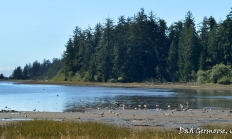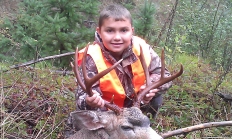Search myodfw.com
Showing 121 - 140 of 1542 results
Landing page
Find the 2020-21 weekly statistics for waterfowl and upland game birds at Klamath Wildlife Area.
September 15, 2017
Article
Coos Bay is Oregon’s largest bay. The lower bay (areas from the ocean entrance to the airport) is “marine dominated”, meaning there is little freshwater influence, and offers some of Oregon’s most productive shellfishing opportunities.

Landing page
Find the weekly statistics for waterfowl and upland game birds at Summer Lake Wildlife Area.
October 13, 2017
Article
Information gleaned from the teeth of harvested black-tail deer will help ODFW biologists learn more about the deer population.
Article
The areas around Bandon, on the Coquille River, have productive softshell beds. The areas near Bandon Marsh National Wildlife Refuge tend to be the most popular. Populations of other bay clams may be found close to the jettys but are mostly subtidal.

Landing page
Planning your 2020-21 Sauvie Island hunt? Check the weekly Hunt Reports (video), Eastside reservation summaries, and daily harvest summaries to see where the successful hunters have been shooting.
October 18, 2021
Article
Nehalem Bay offers both beach and boat access to softshell and purple varnish clam beds.

Article
Looking for the perfect gift for the hunter on your holiday list? We’ve asked some ODFW staff, all avid hunters, to share their gift-giving (and gift-getting) ideas.

Article
We asked some of the fisher folk at ODFW for their favorite gift-giving ideas. Here's what they said.

Article
You'll find crab areas and softshell clamming opportunities in the southern part of the bay.

Article
Clamming is the main attraction in Netarts Bay. The bay is also one of five major crabbing bays in Oregon with good populations of both Dungeness and redrock crab.

Landing page
Find maps, boundary descriptions and the percent public land for the Beatys Butte Unit.
September 05, 2017
Article
Some youth big game hunts rival adult tags in terms of the number of preference points needed to draw. Knowing how the system works can help you make the most of their hunting opportunities before they turn 18.
February 22, 2022

Article
To most anglers, herring and anchovies are best known as bait. But they also can be fun to catch and delicious for dinner.
Article
Siletz Bay, located at the south end of Lincoln City, is a very popular destination for beach-goers and clam diggers. Some of the highest density purple varnish clam beds are easily accessed here. Its proximity to the ocean also makes it a very productive seasonal crabbing area

Article
Follow this page for background on steelhead management, to provide feedback and learn about decisions when they happen for the Columbia, Deschutes, John Day, Umatilla, Walla Walla and Grand Ronde rivers. Sign up for email/text updates Video
February 8, 2023
Workshop and Events
Date
April 23 and 24, 2022
Location
Redmond Rod and Gun Club, Redmond

Article
The Siuslaw River runs past the city of Florence and then flows for 4 miles before reaching the Pacific ocean. Areas west of the 101 bridge feature excellent seasonal crabbing and even some good diving.

Article
Crabbing can be good year-round but the best catches are in the winter. Tidal flats throughout the bay produce lots of gapers, cockles and softshell clams.

Workshop and Events
Family fishing events make it easy to take the family fishing.
Date
Mostly in May and June, sometimes fall.
Location
There are events throughout the state.

